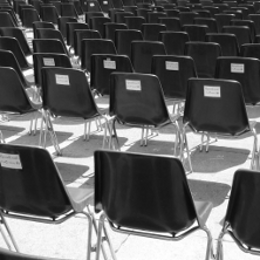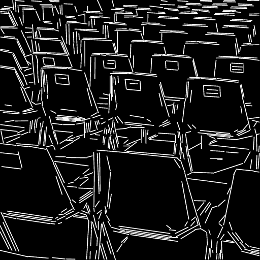Summer School 2012

Photo by Böhringer
Gestalt Theory and Image Analysis
by Rafael Grompone Ph.D.
At the beginnings of XX century a group of German psychologist founded the Gestalt theory attempting to understand perception, and especially visual perception.
They proposed that perception works like a geometrical grouping machine, following defined laws.
At the turn of the century, Desolneux, Moisan and Morel undertook the task of formalizing the Gestalt theory to give a precise mathematical foundation to computer vision. This ambitious programme is still in progress but it already proved fruitful, resulting in state-of-the-art algorithms. The main contribution is a method for establishing detections thresholds, the so-called "a-contrario framework" based on the non-accidentalness principle: a structure is relevant if would rarely occur by chance. This is a fundamental brick in the construction of parameterless computer vision algorithms, as required by automatic vision systems.
This tutorial will first give the basic ideas of Gestalt theory. Then the general picture of Desolneux, Moisan and Morel's formalization will be introduced, including the non-accidentalness principle and the a-contrario framework. The LSD algorithm for line segment detection will be described in more detail; the simplicity of this algorithm permits a comprehensive understanding of an image analysis method. Finally, the main developments of the a-contrario theory will be overviewed.
detailed abstract


References
- "From Gestalt Theory to Image Analysis" by Desolneux, Moisan, Morel, 2008 (Preprint version available for Gk-Members ).
- " LSD: A Fast Line Segment Detector with a False Detection Control", by Rafael Grompone von Gioi, Jeremie Jakubowicz, Jean-Michel Morel, Gregory Randall, IEEE Transactions on Pattern Analysis and Machine Intelligence, vol. 32, no. 4, pp. 722-732, April 2010.
- " LSD: a Line Segment Detector", by Rafael Grompone von Gioi, Jeremie Jakubowicz, Jean-Michel Morel, Gregory Randall, Image Processing On Line, 2012.

